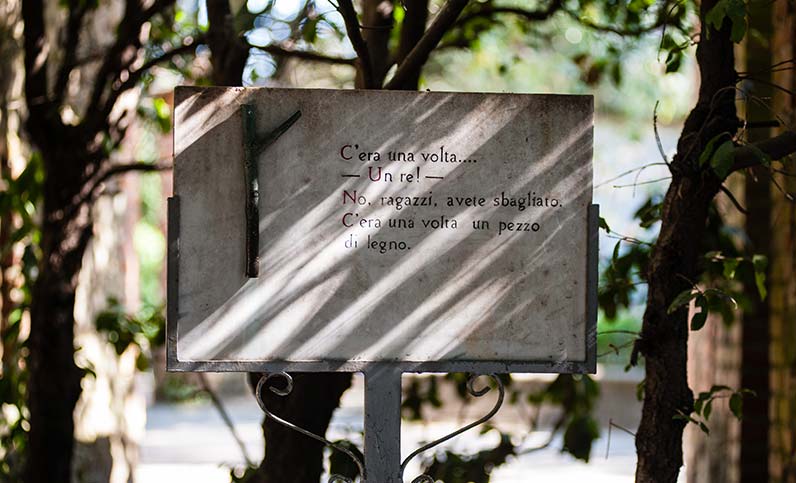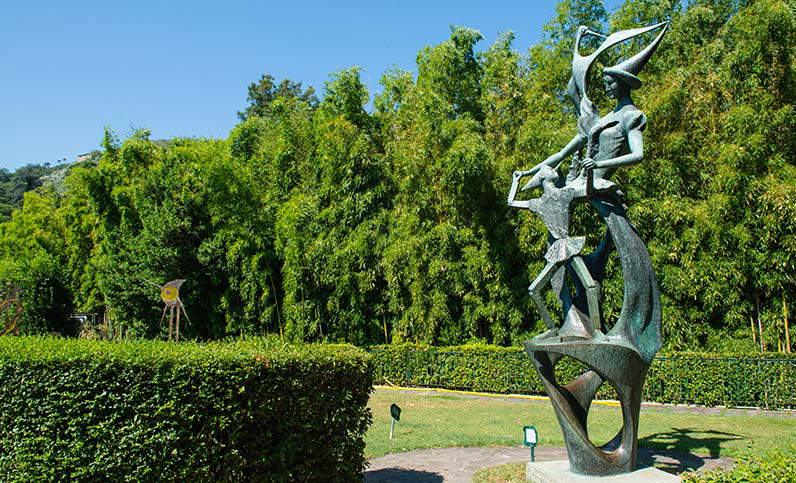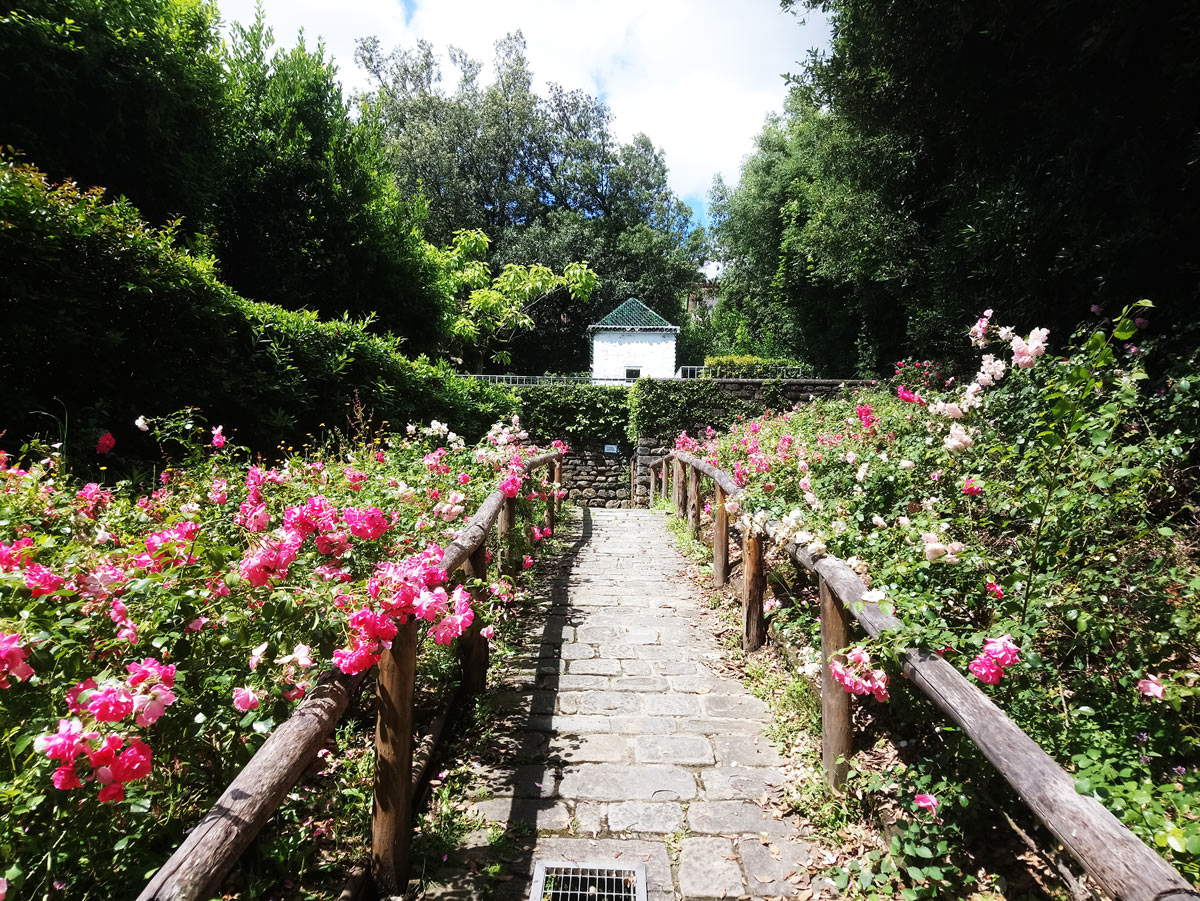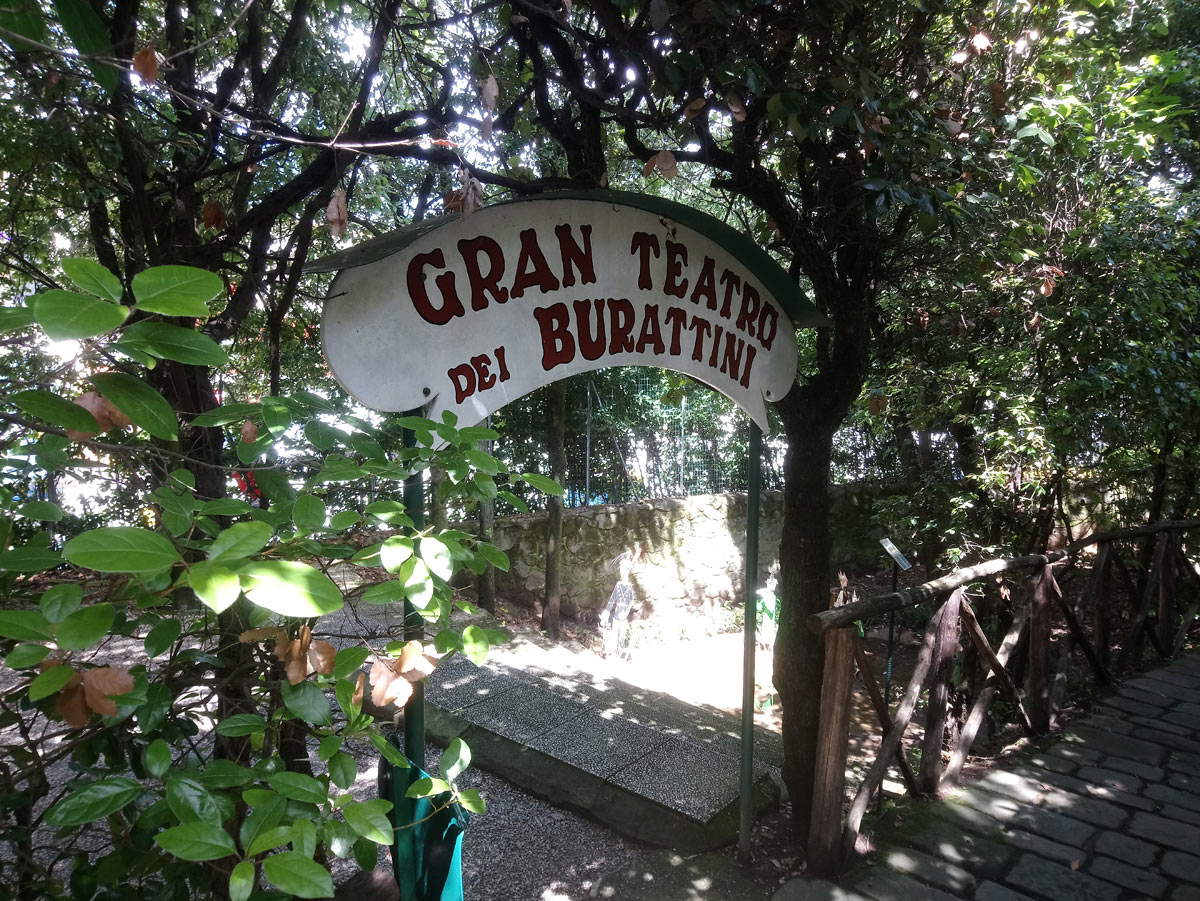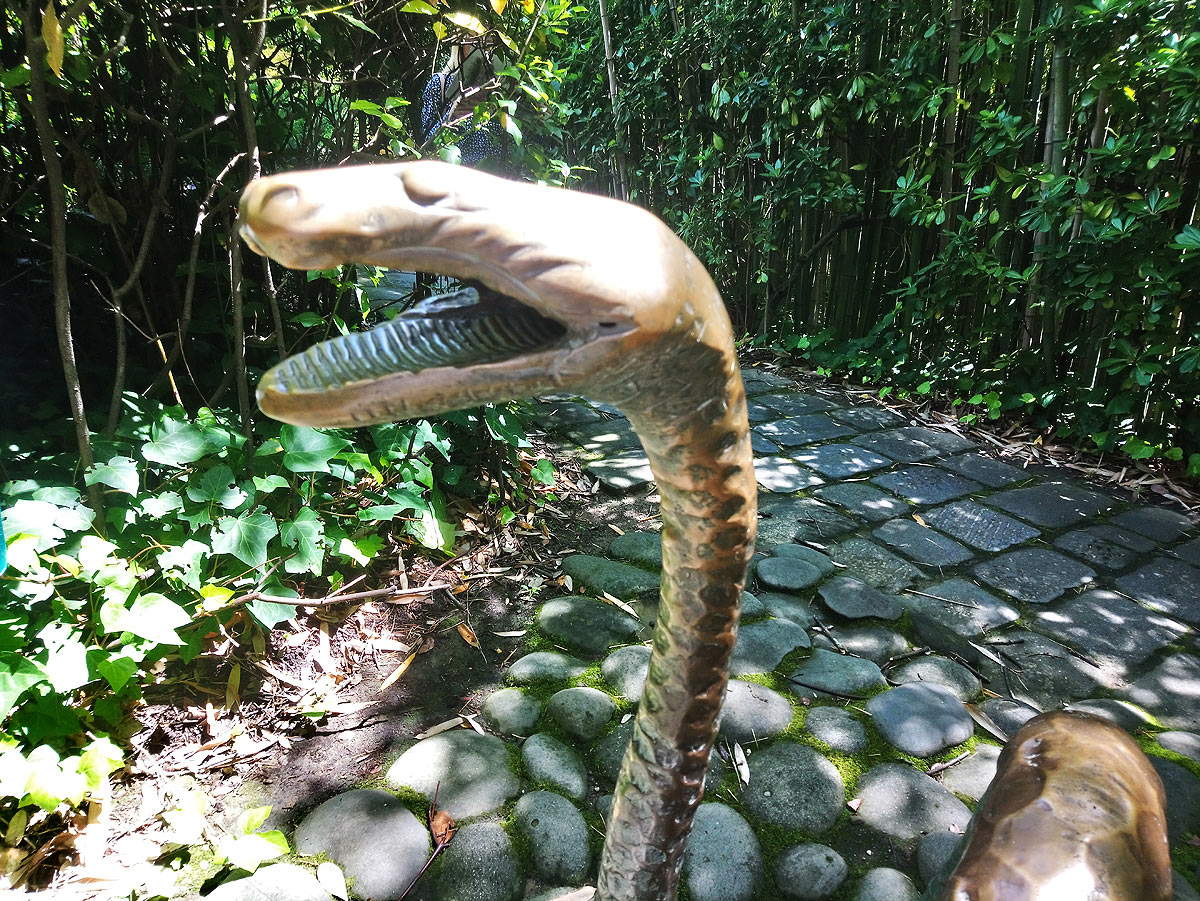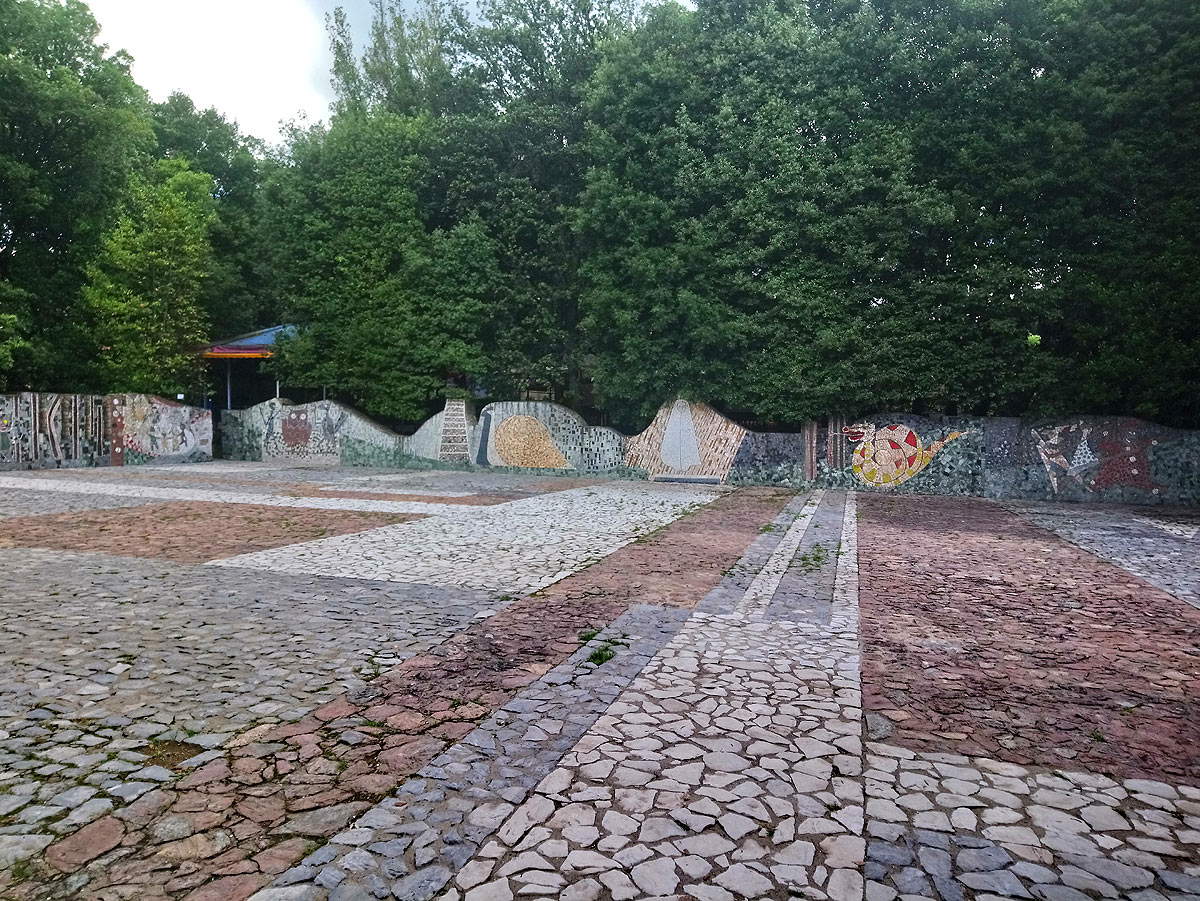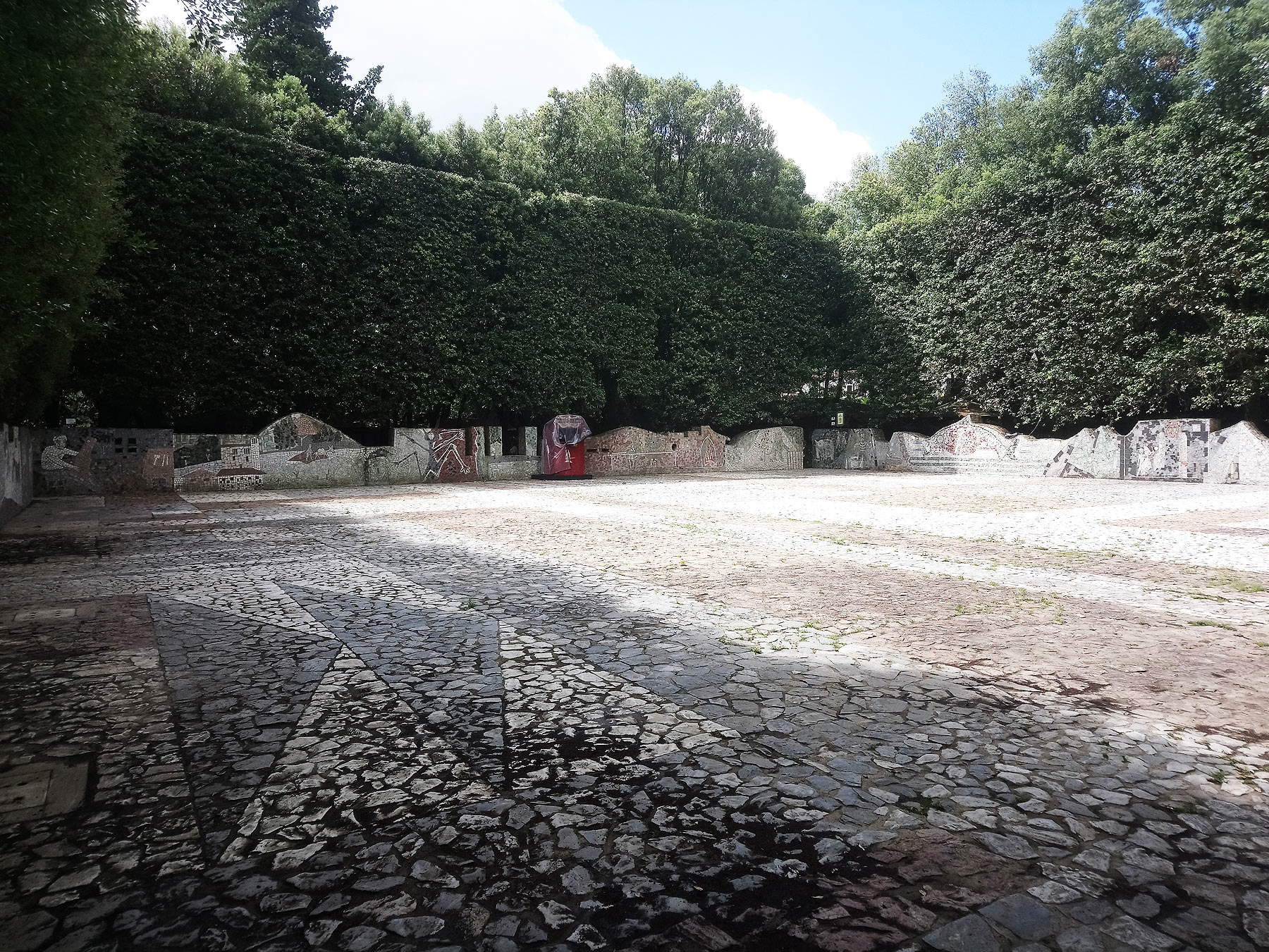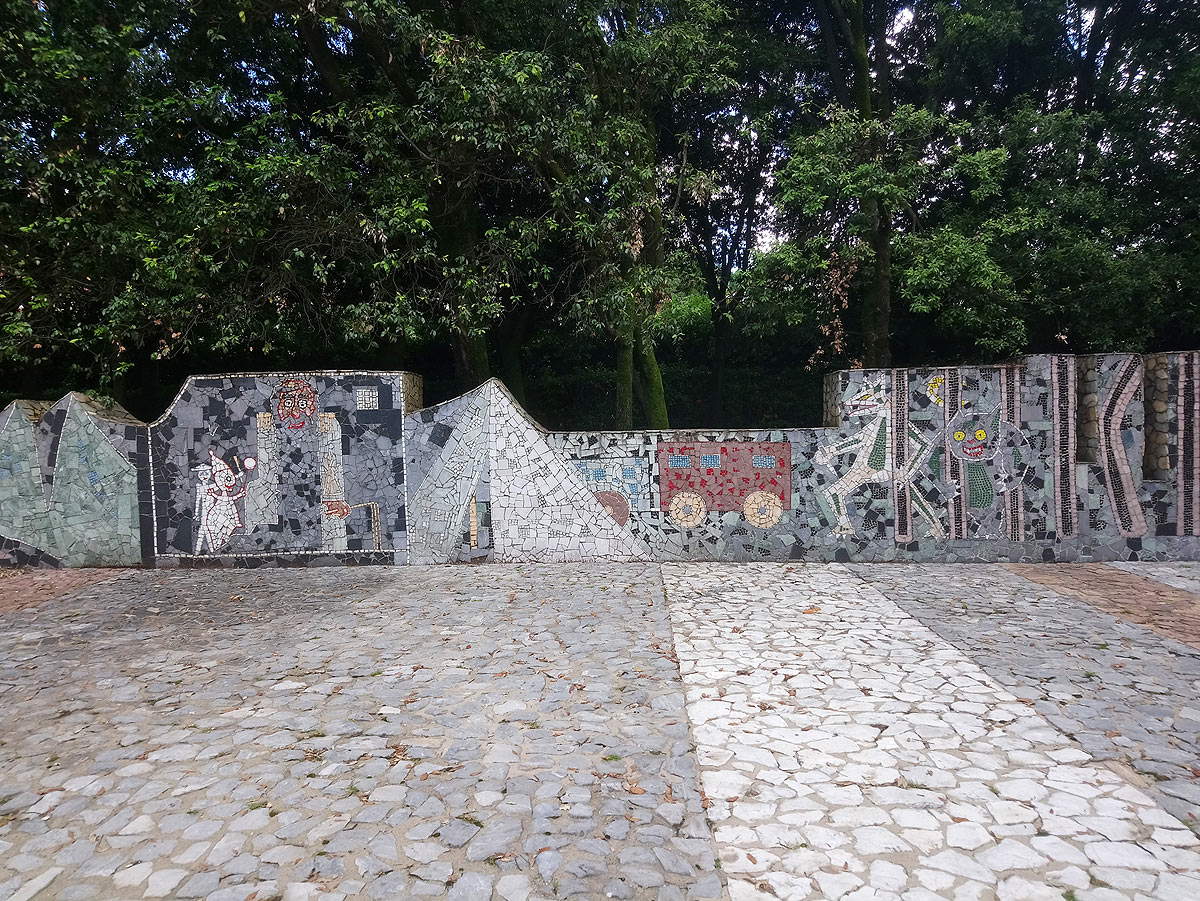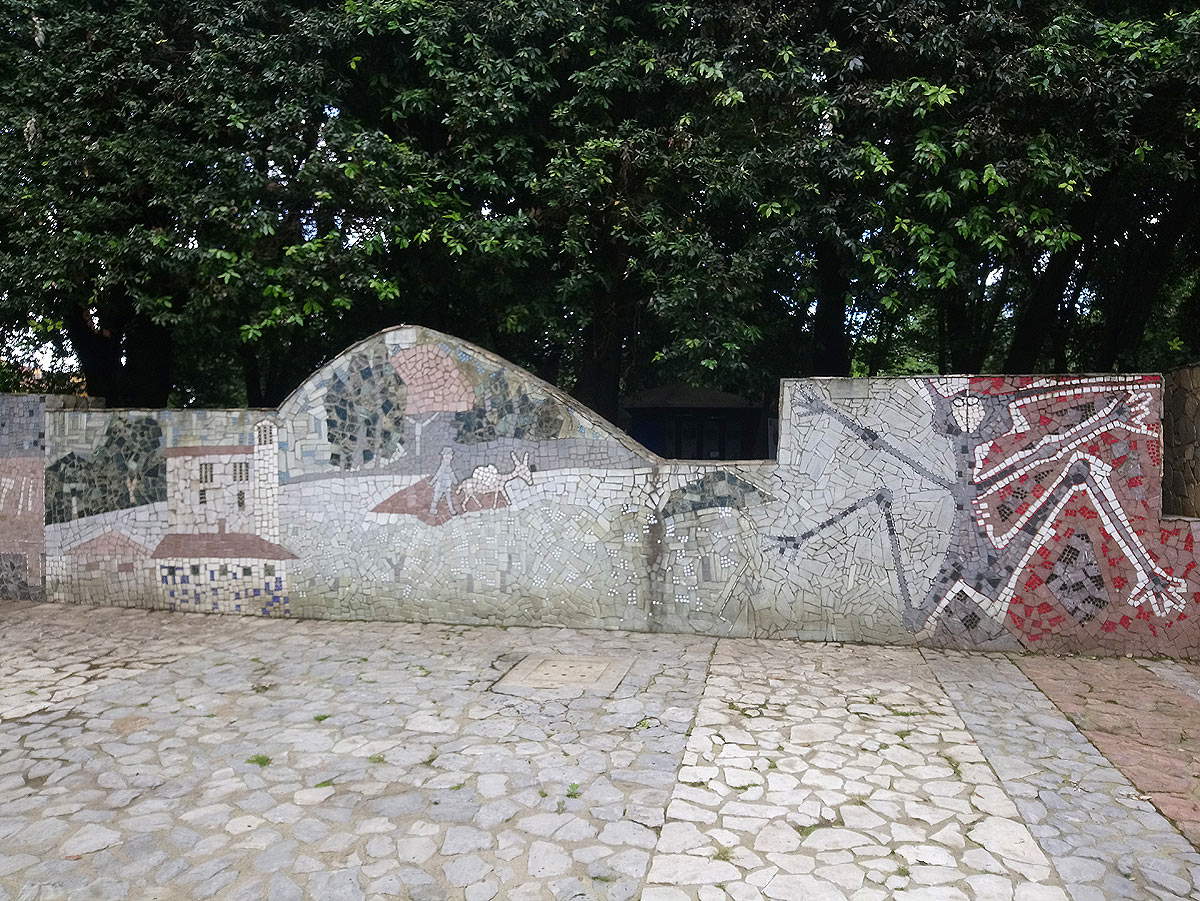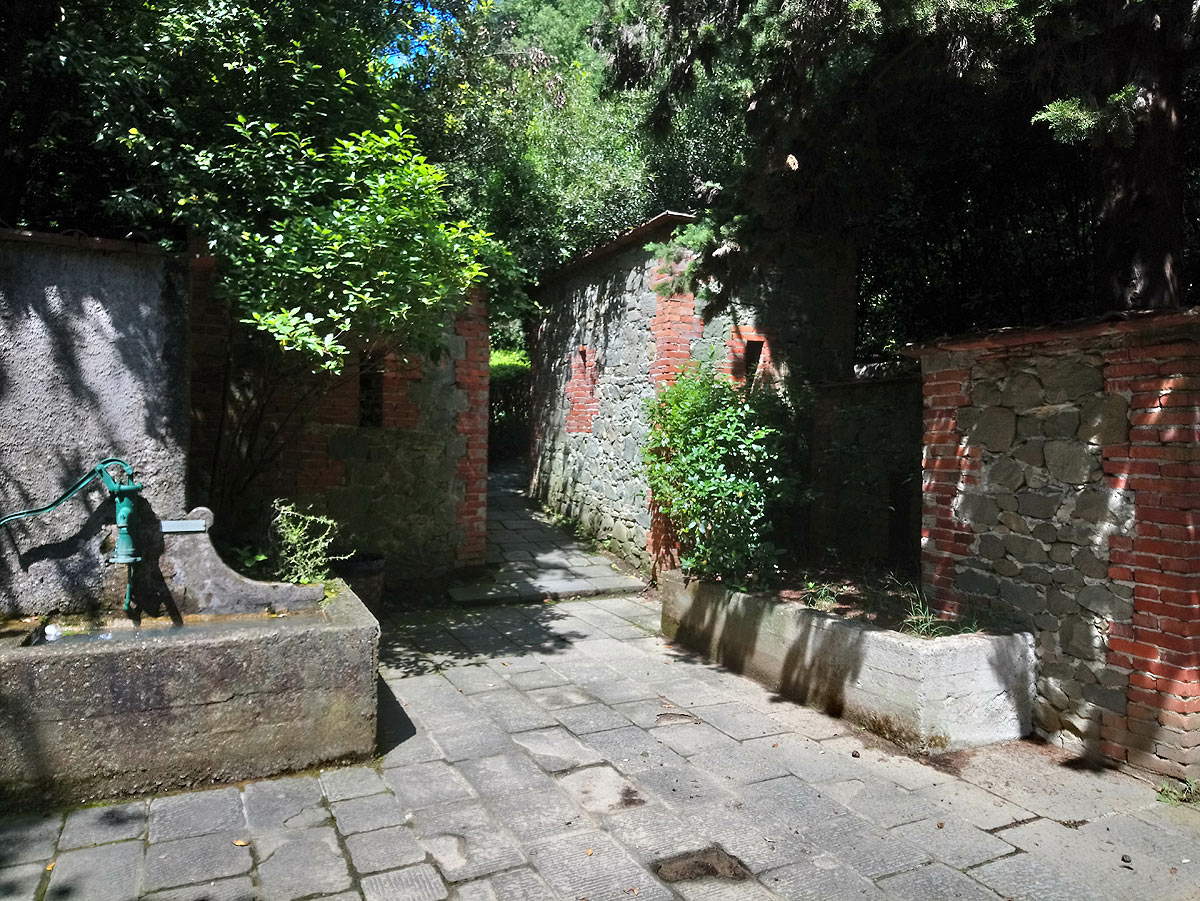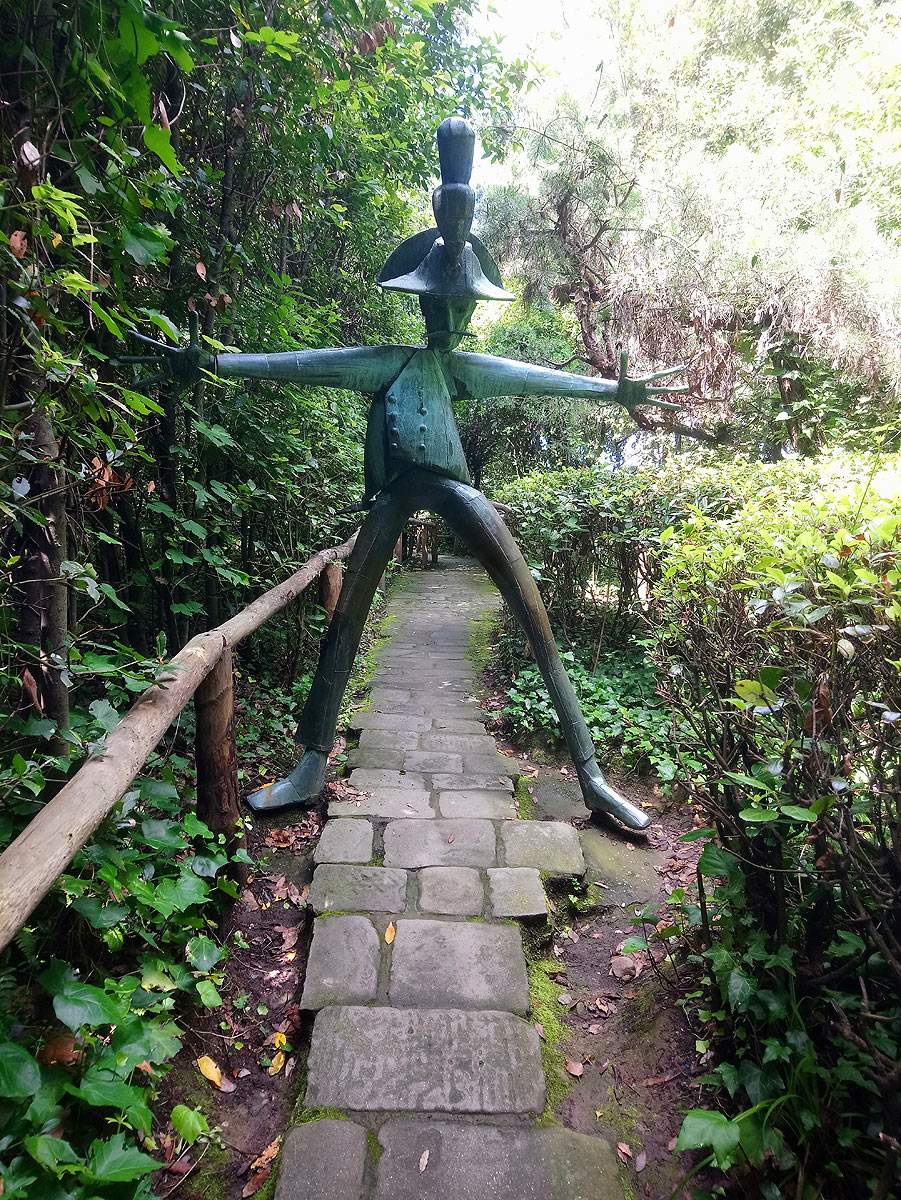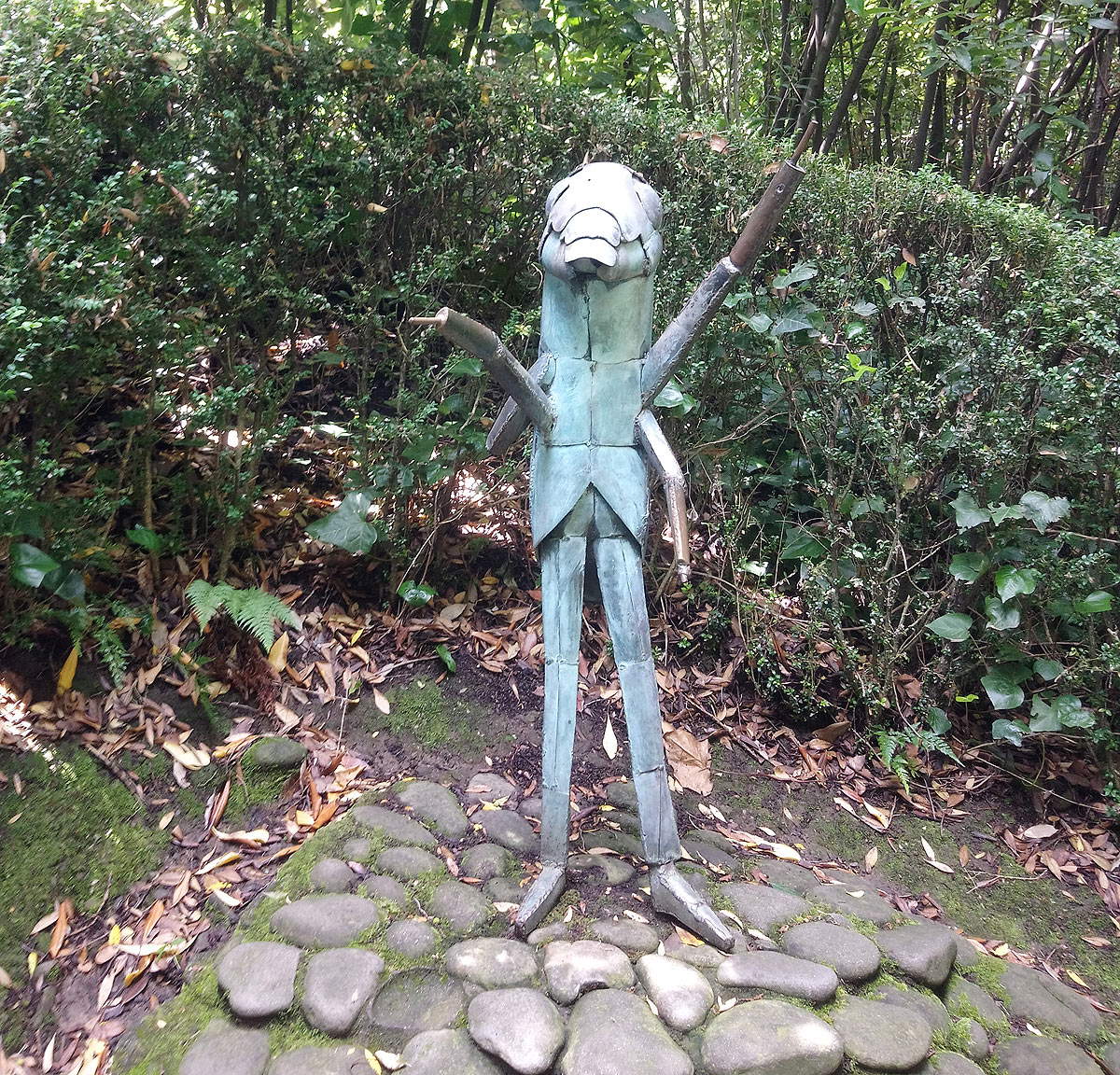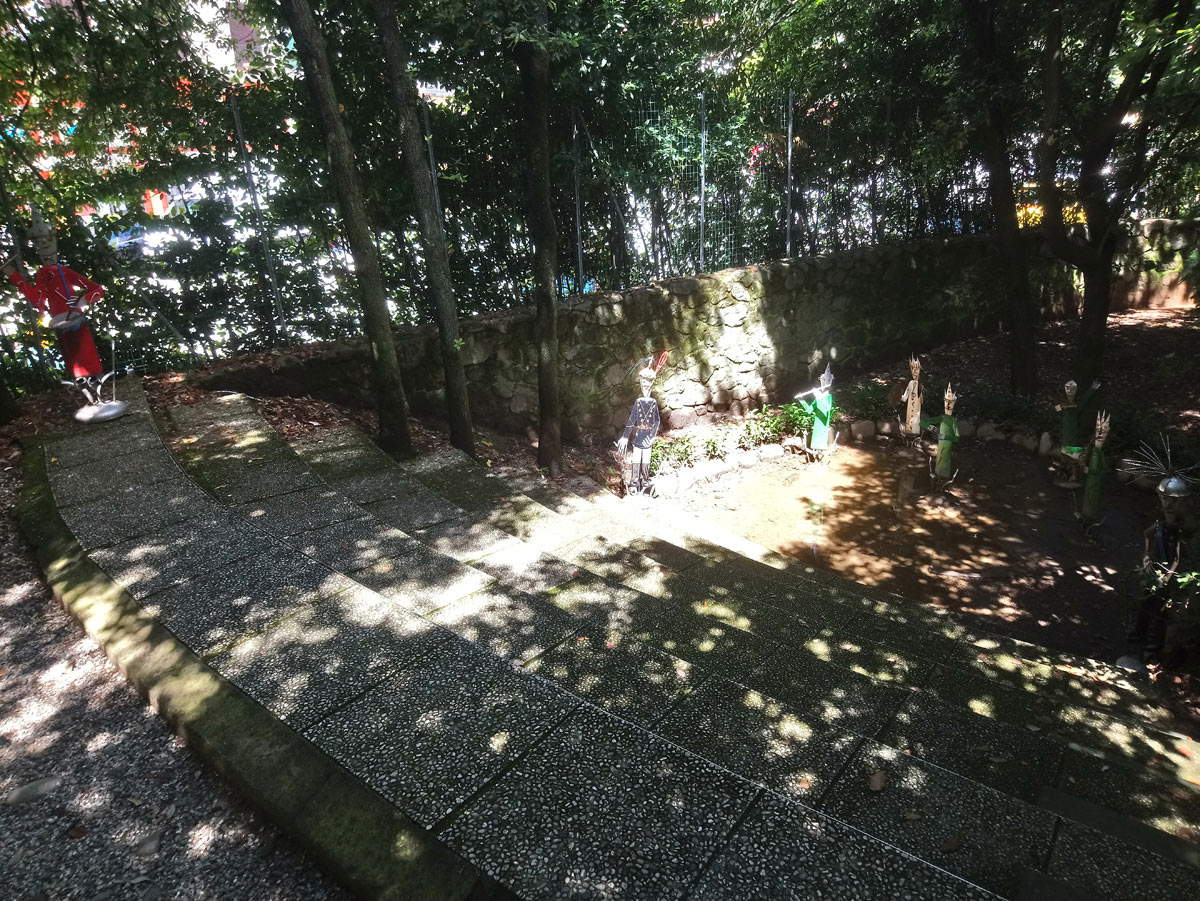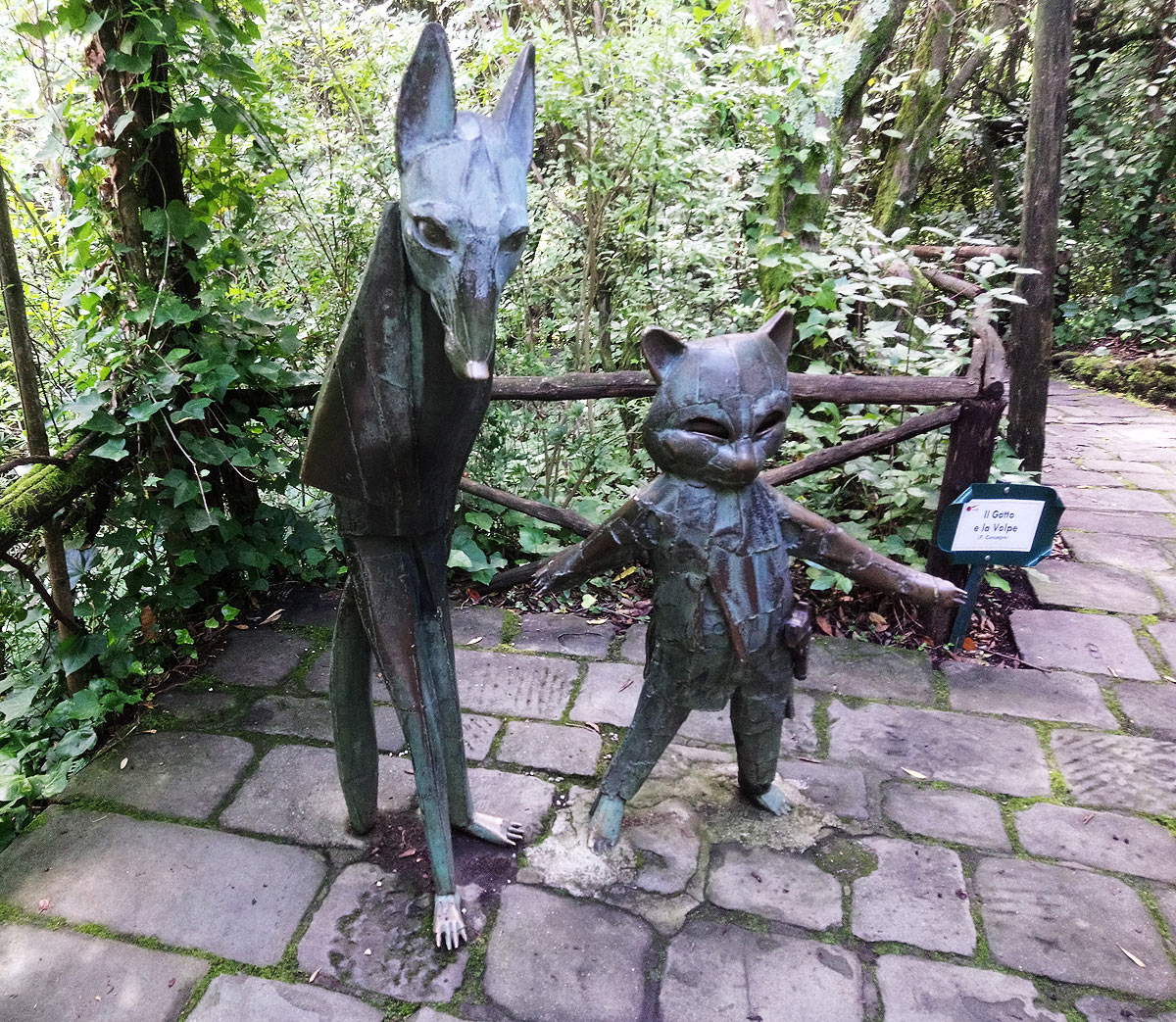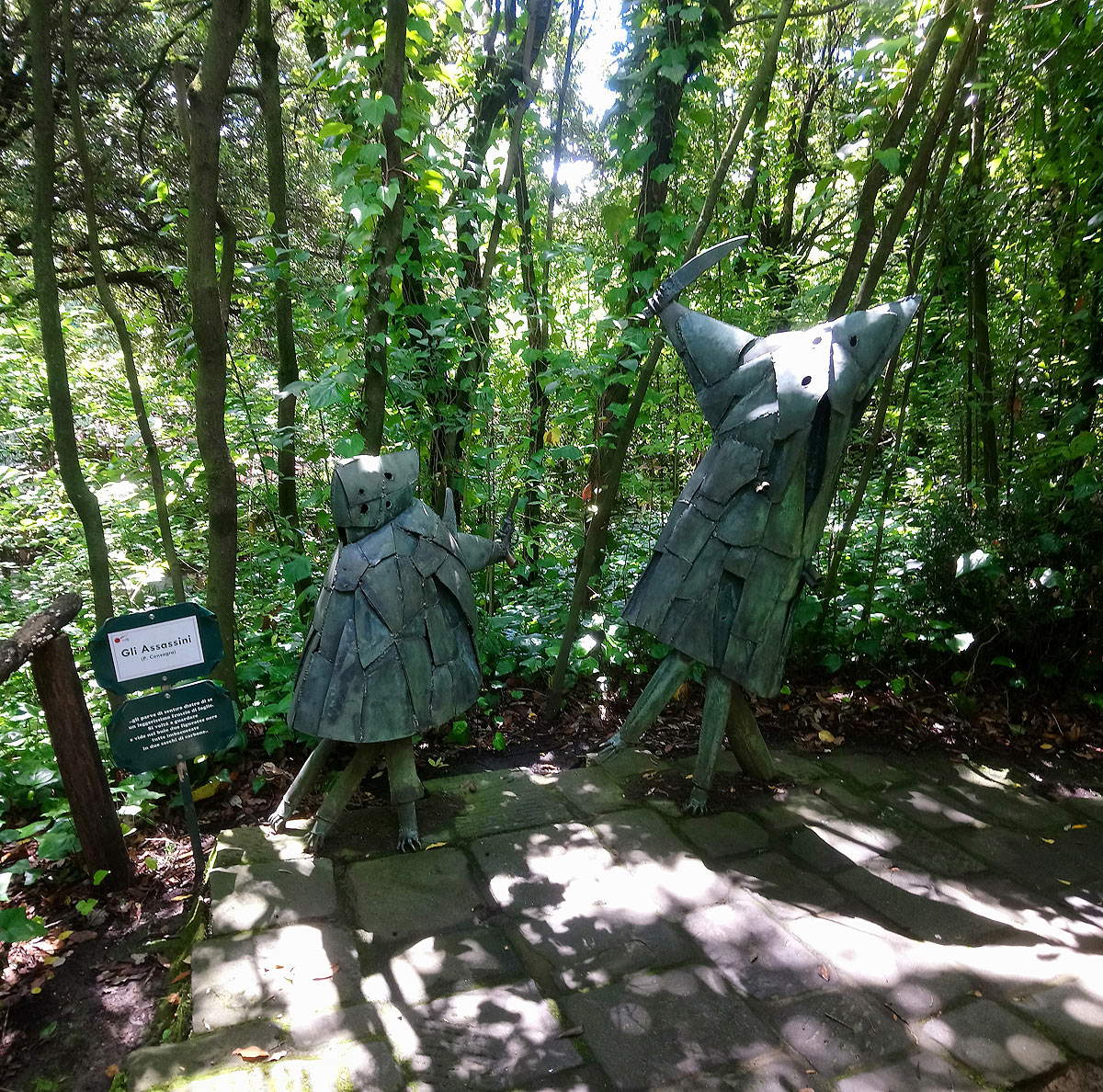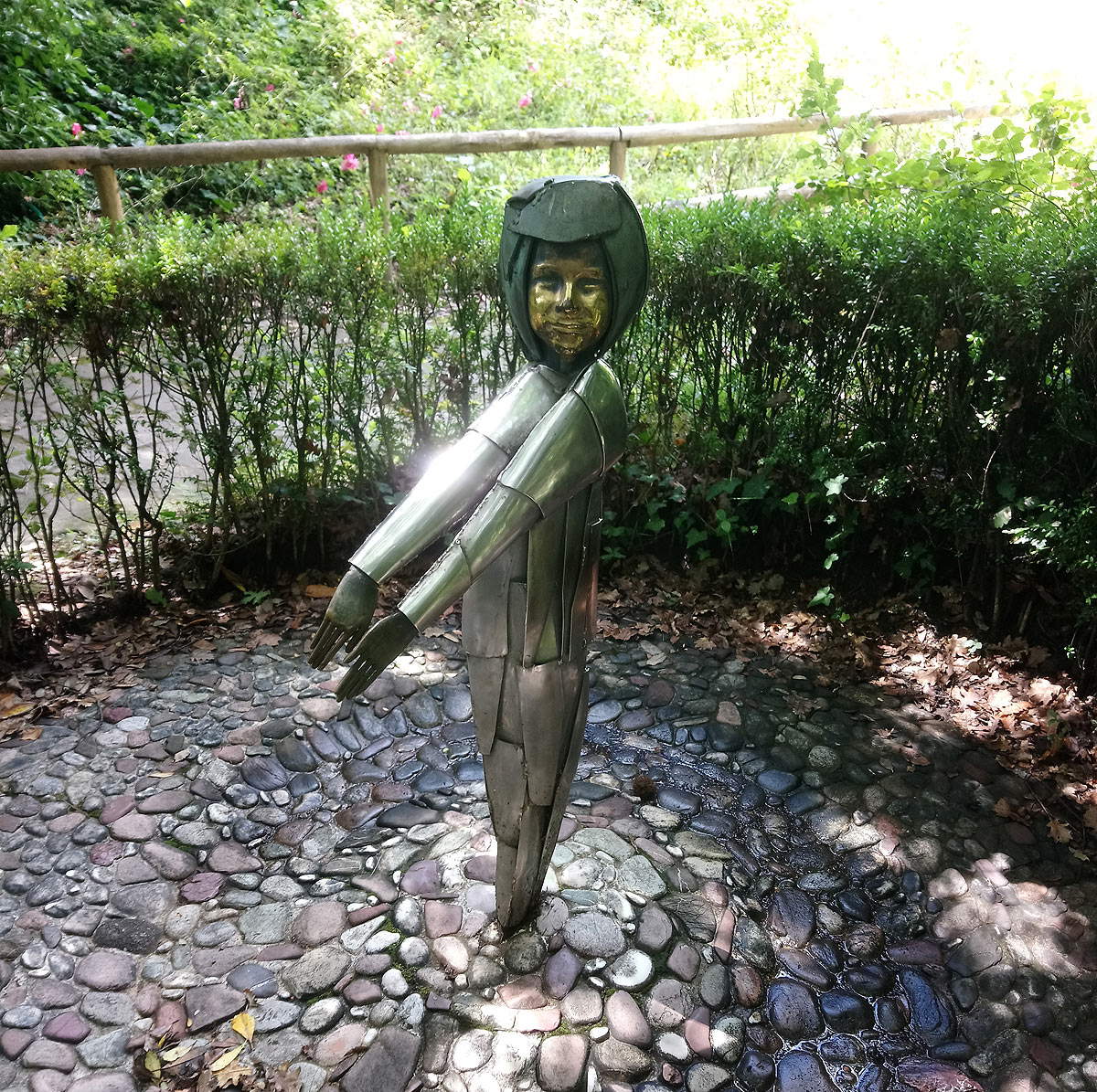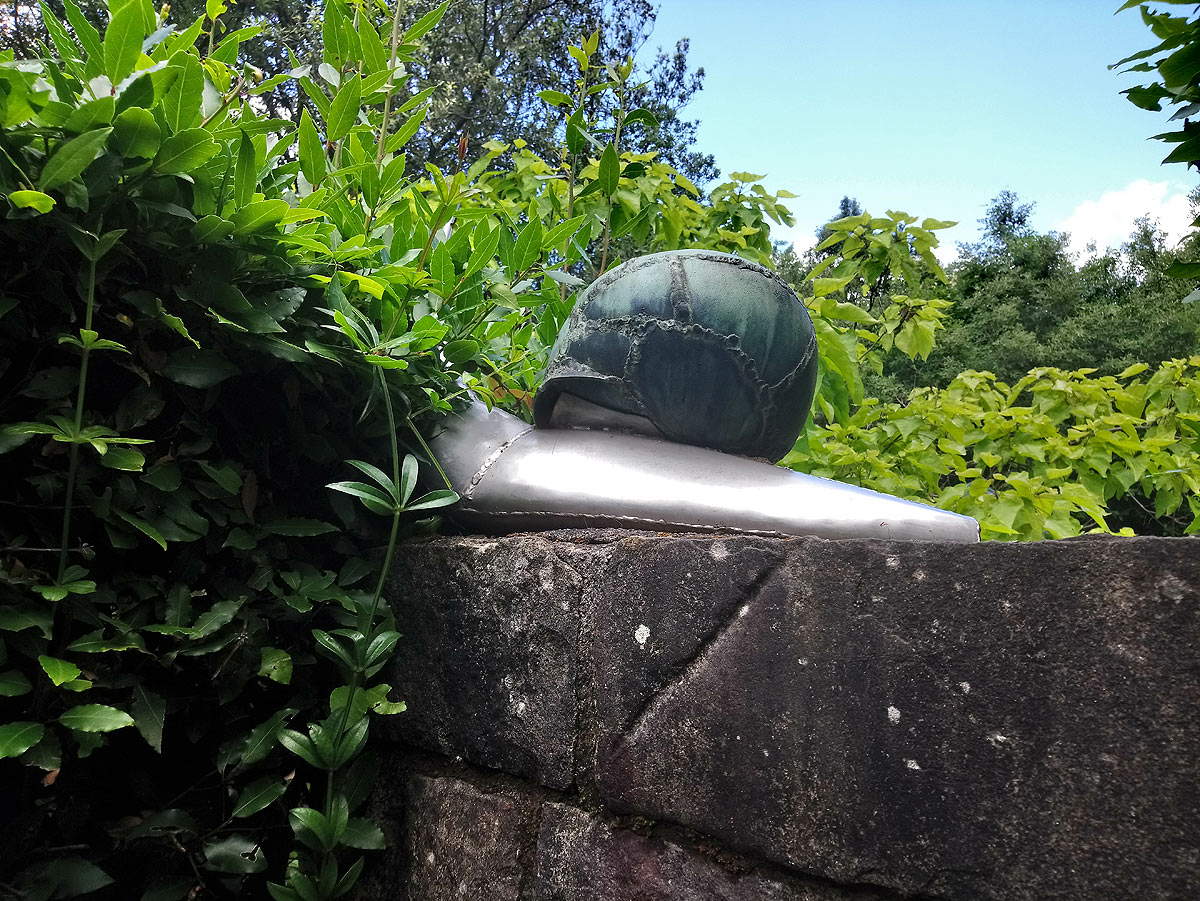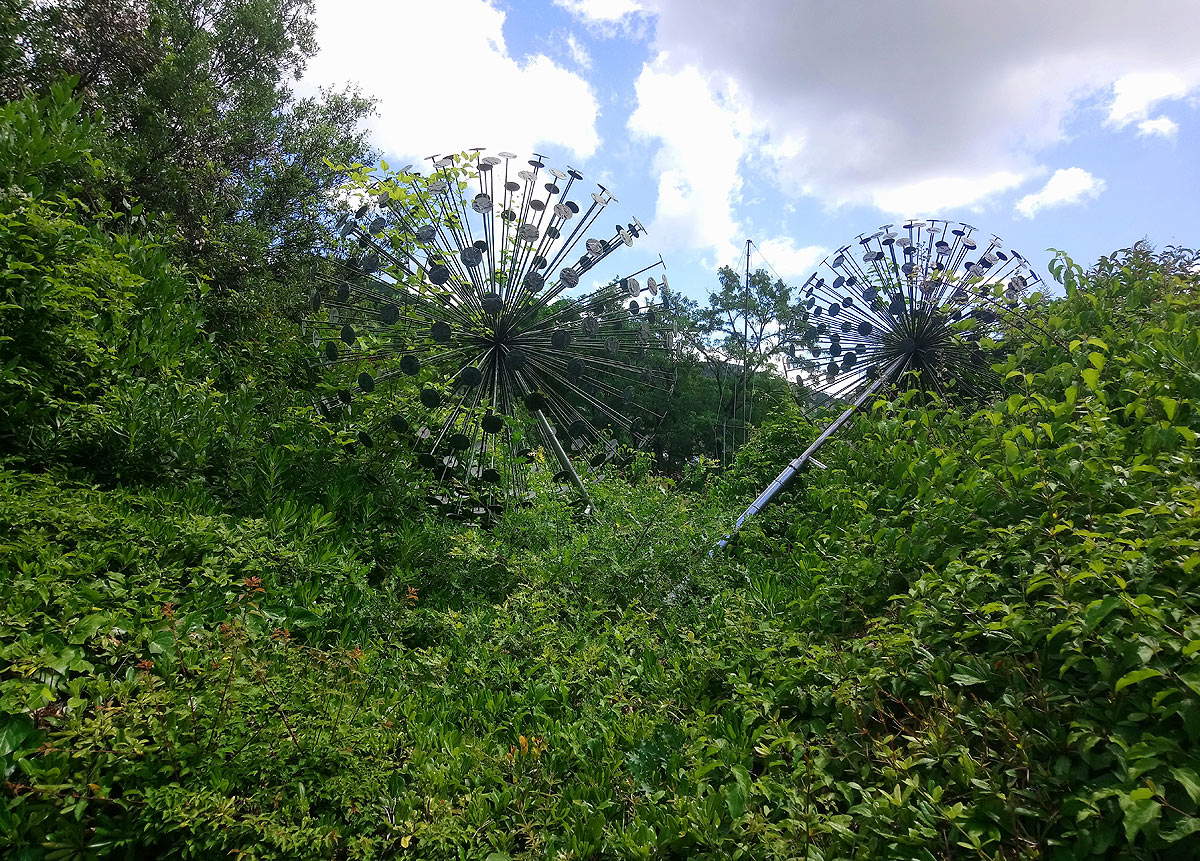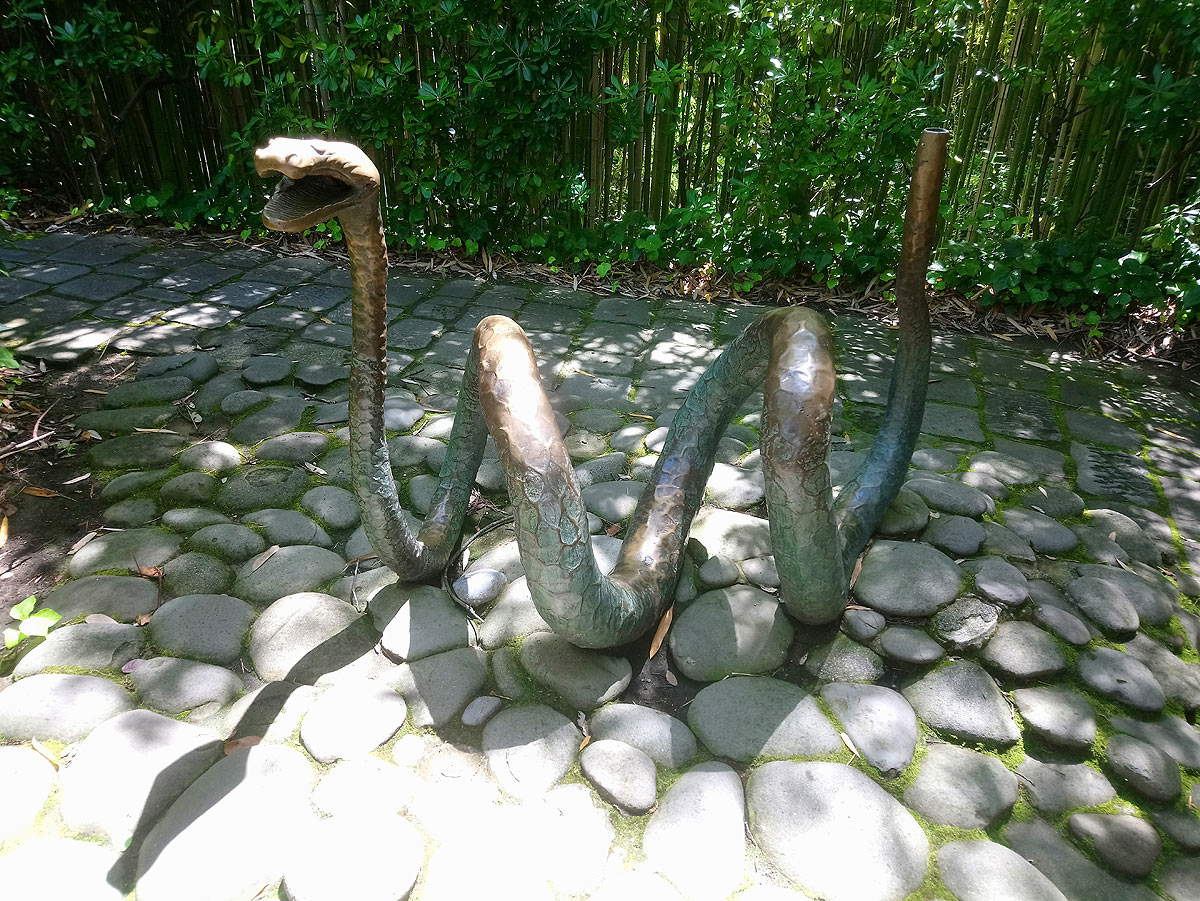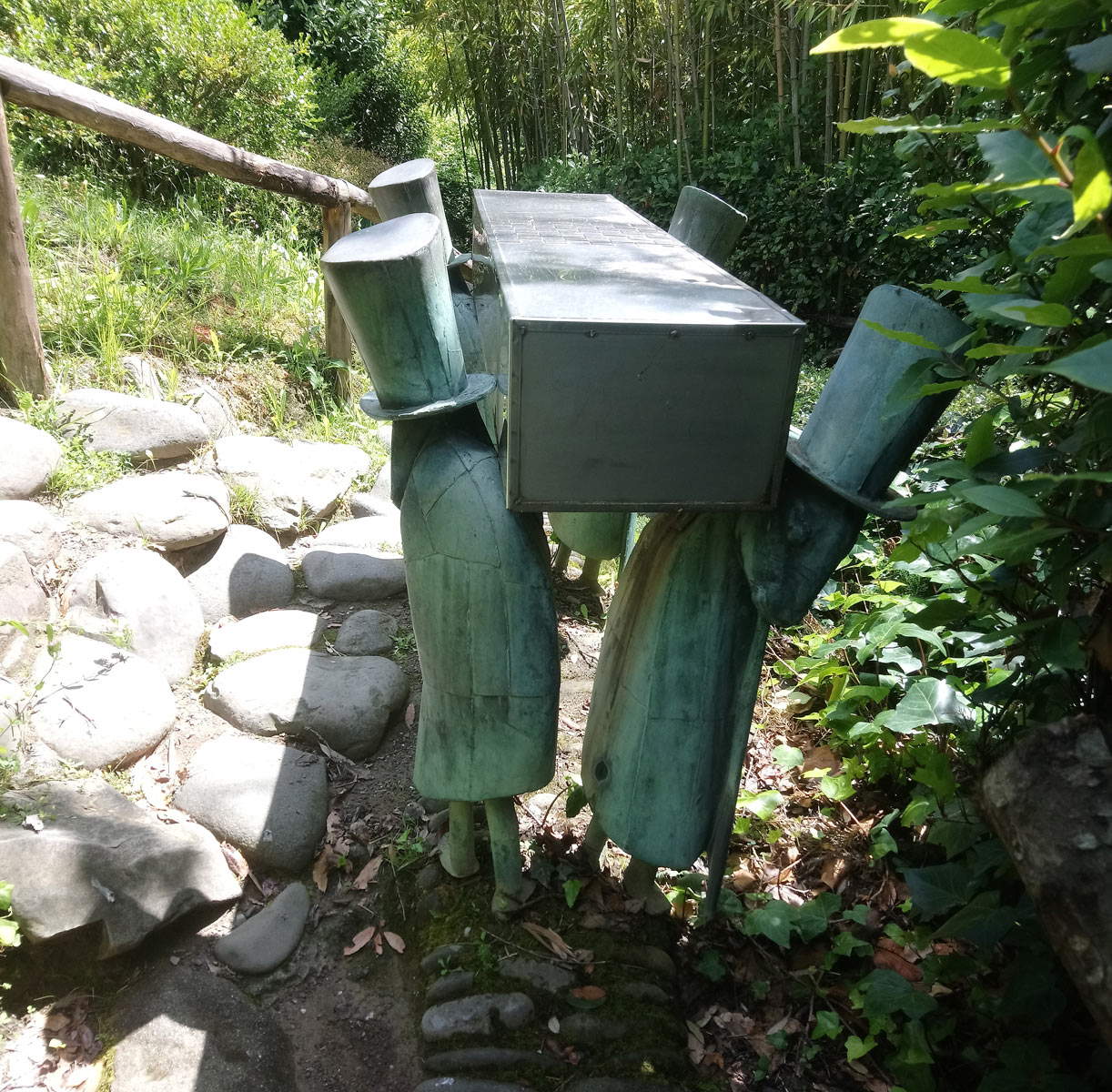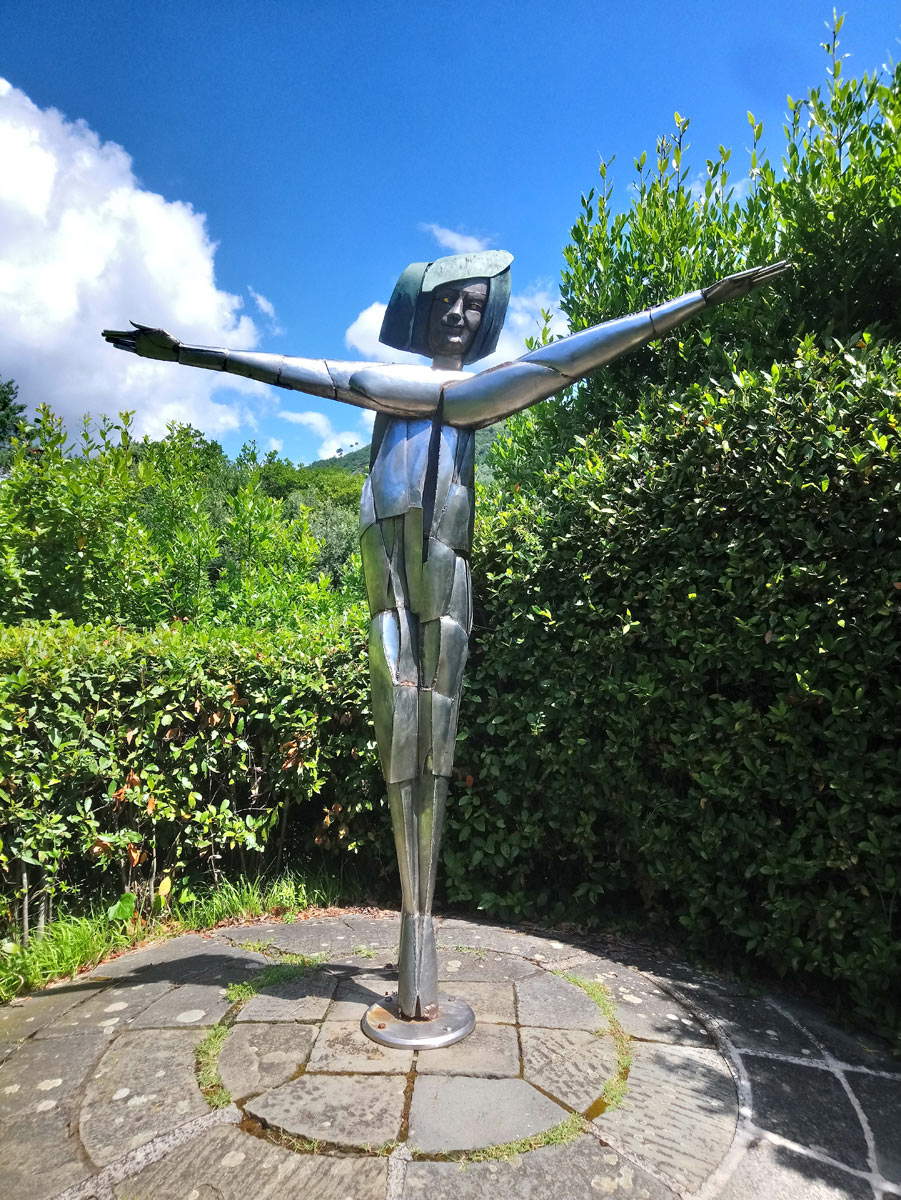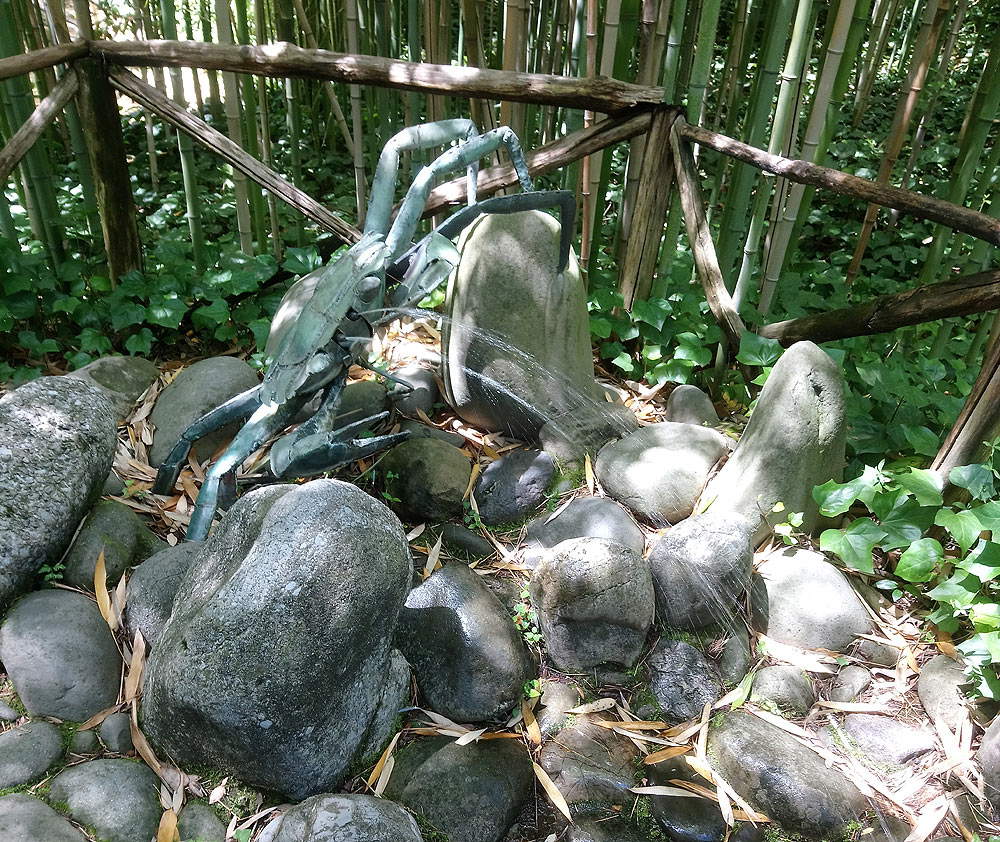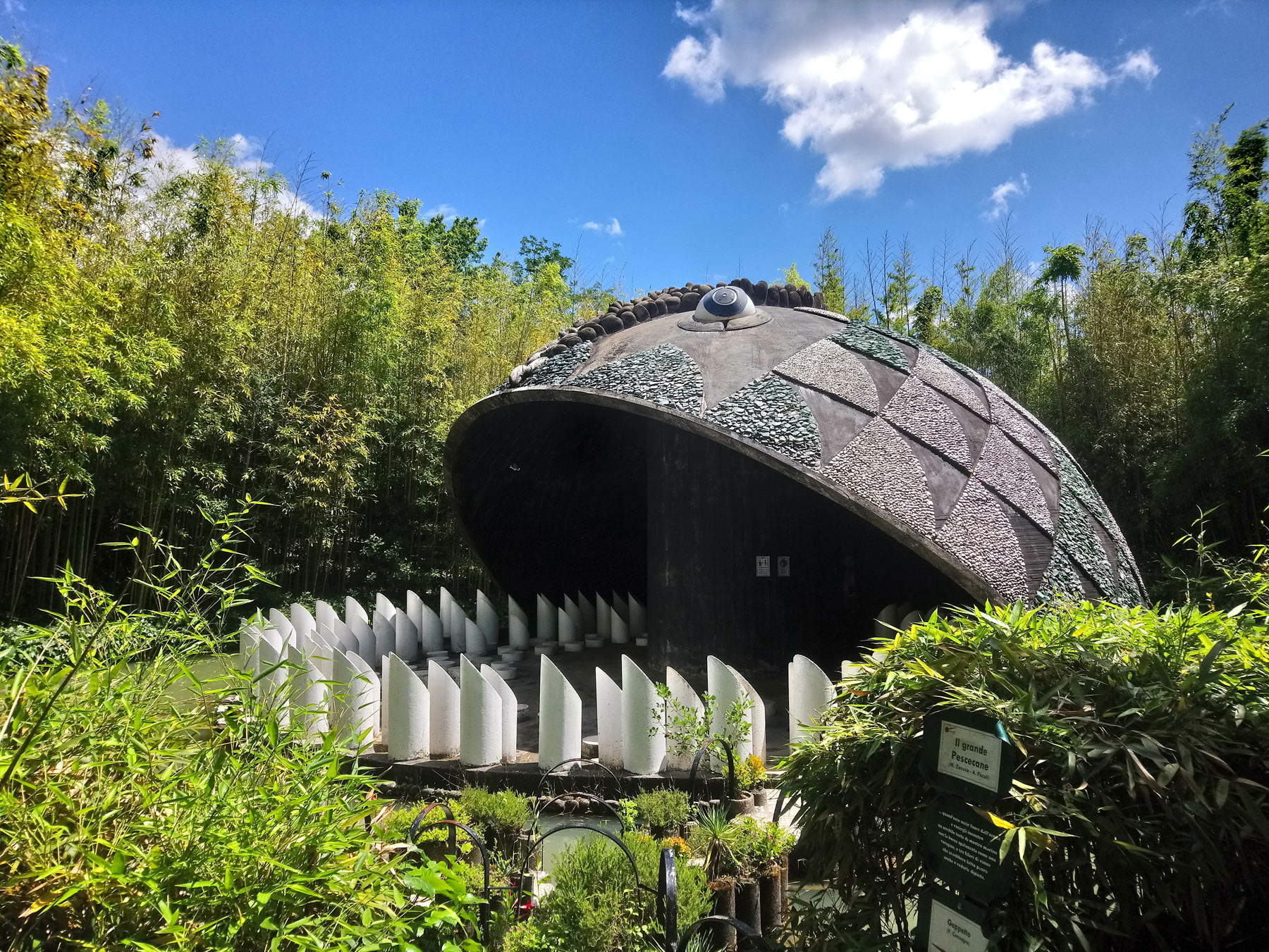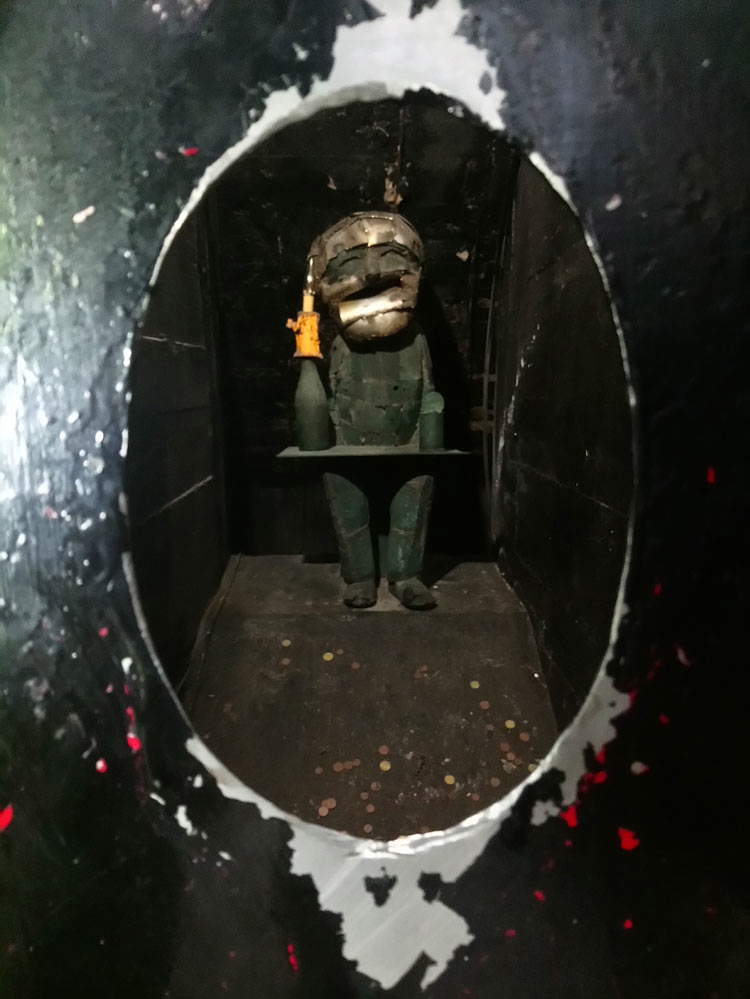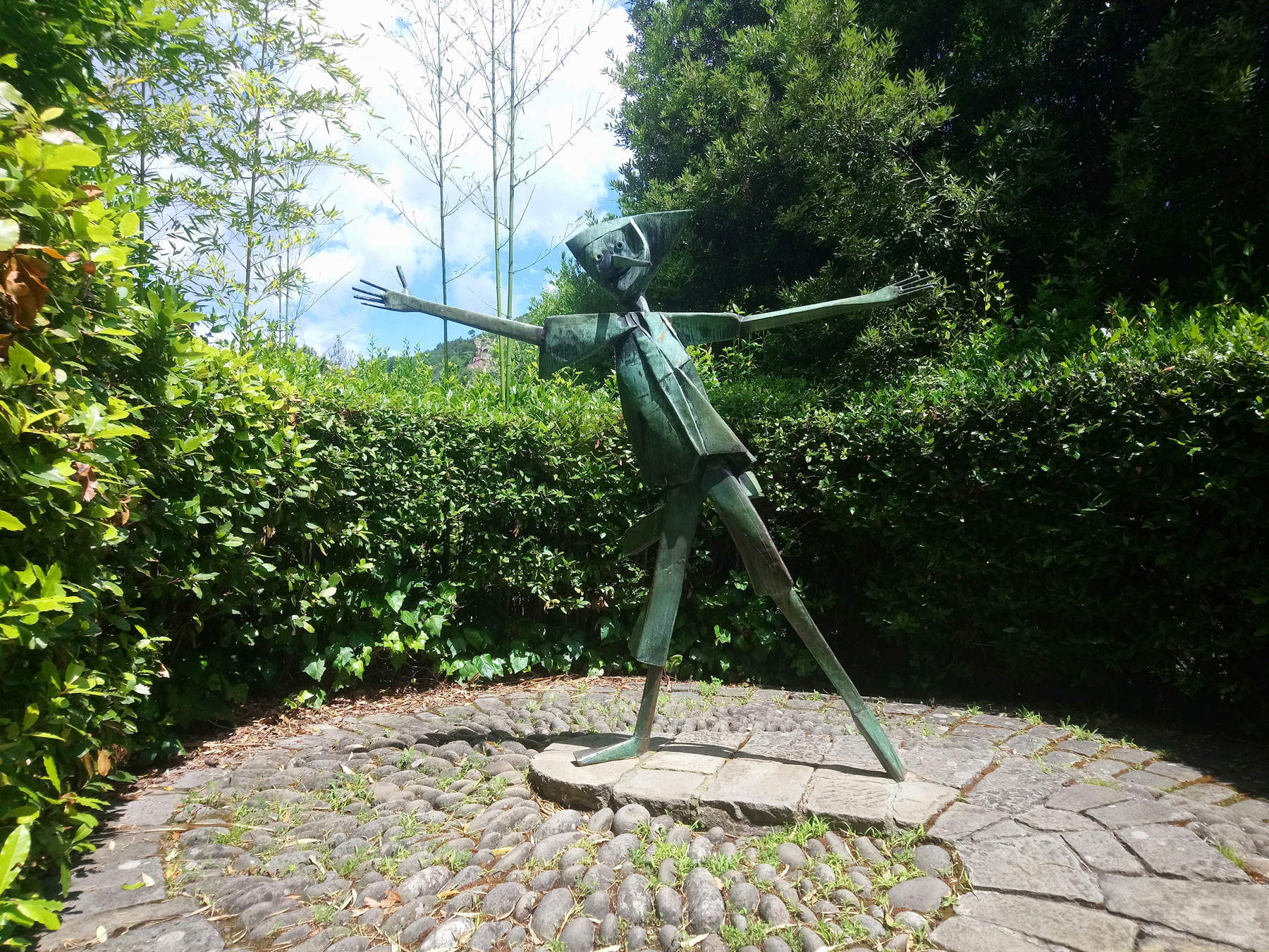by Ilaria Baratta , published on 29/06/2020
Categories: Works and artists
/ Disclaimer
The Pinocchio Monumental Park has been open in Collodi since 1972: an incredible journey of art and nature, with sculptures by great artists evoking the fairy tale of the world's most famous puppet.
“Once upon a time... - A king! - my little readers will immediately say. No, kids, you got it wrong. Once upon a time there was a piece of wood.” Everyone will know that this is the incipit of The Adventures of Pinocchio by Carlo Lorenzini (Florence, 1826 - 1890), better known by the pseudonym Carlo Collodi, from the place of origin of his mother and village where the author of the story of the world’s most famous puppet spent much of his childhood. However, the incipit also initiates the monumental park entirely dedicated to Pinocchio in the very village of Collodi, near Pescia, in the heart of Tuscany.
In fact, the adventures of the puppet finally transformed into a child of flesh and blood thanks to the Blue Fairy are retraced in stages through bronze and steel sculptures created by great artists of the 20th century. Immersed in the vegetation, the works bring to mind the most salient episodes of the story, and if any episode escapes memory, an innovative QR code system gives the opportunity to listen to the passage of the original text corresponding to each statue recited by the voices of Pinocchio and the characters he gradually encounters on his life journey. Children, the park’s favorite visitors, thus have a way of associating the various moments of the story with the twenty-one sculptures scattered among the greenery, which can be reached simply by following a predefined itinerary on paths; parents, who in turn become children again here, can have their children listen to the recited scenes from their device and perhaps, once back home, reread the book of Pinocchio’s adventures together.
The Park mostly attracts families with children or is a destination for educational field trips every year, but among the more than seven million visitors from around the world who have passed through it, many are fans of contemporary art and 20th-century architecture and landscape architecture, as the sculptural works in it are of significant interest in the contemporary art scene. In fact, it could be called a true open-air museum, as the sculptures trace a fantastic path among the flowers and vegetation, inviting visitors to continue on their way to be told the famous story of the puppet and to meet all the various characters with whom Pinocchio himself found himself in dialogue. They are also works born out of the intellectual and manual creativity of some of the best-known artists of the second half of the 20th century, such as Pietro Consagra (Mazara del Vallo, 1920 - Milan, 2005), Marco Zanuso (Milan, 1916 - 2001), Emilio Greco (Catania, 1913 - Rome, 1995), and Venturino Venturi (Loro Ciuffenna, 1918 - Terranuova Bracciolini, 2002).
It was opened to the public in 1956, evolving to keep up with the times, but always remaining faithful to Collodi’s novel. And it was conceived and built by the Committee for a Pinocchio Monument, chaired by Professor Rolando Anzilotti, formed in the 1950s by a group of local citizens, with the support of the Municipality of Pescia. Instead, it is managed by the Carlo Collodi National Foundation, which also owns the property.
At the time of its inauguration, the Park occupied a green area designed by architects Renato Baldi and Lionello De Luigi in the lower part of the village of Collodi, and consisted only of the bronze statue made by Emilio Greco depicting Pinocchio and the Fairy, now located about the entrance, and the Piazzetta dei Mosaici completed by Venturino Venturi. The latter are still visible in the first part of the park. From 1963 it began to be enlarged with the construction of the building that still houses theOsteria del Gambero Rosso, while the monumental path with the sculptures of the characters was realized in 1972 thanks to the design of landscape architect Pietro Porcinai (Fiesole, 1910 - Florence, 1986).
 |
| The incipit of the book of Pinocchio. Ph. Credit Pinocchio Monumental Park |
 |
| Emilio Greco, Pinocchio and the fairy (1956; bronze; Collodi, Pinocchio Monumental Park). Ph. Credit Pinocchio Monumental Park. |
 |
| Pinocchio’s monumental park. Ph. Credit Finestre Sull’Arte. |
 |
| Pinocchio’s monumental park. Ph. Credit Finestre Sull’Arte. |
 |
| Pinocchio’s monumental park. Ph. Credit Finestre Sull’Arte |
 |
| The square of mosaics. Ph. Credit Finestre Sull’Arte |
To the latter we owe, in the Pistoia area, about a dozen interventions (in the whole of Tuscany about four hundred): among them, projects inside thermal establishments in Montecatini and in a nursery in Pistoia and the arrangement of the garden of the Montecatini Academy, but the most significant project was certainly the Pinocchio Park, which constitutes a unicum in the whole of Italy. It was the 1970s when Porcinai was working on the garden of the Montecatini Academy, and already on this occasion he had conceived of an outdoor sculpture museum with sculptures placed outside, among hedges and plane trees. Therefore, in this project we can already see the basic principles that he would introduce on a larger area, Pinocchio Park, such as placing the sculptural works outdoors, surrounded by vegetation, and working with artists. Here the design of the park and the placement of the sculptures, given the interest especially in sculptors, totally amalgamated. The collaboration between Porcinai, Consagra and Zanuso resulted in a place devoted to simplicity, where the materials are in harmony with the surroundings and the works are presented in an essential and sober style.
Retracing the history of the creation of Pinocchio Park, Porcinai is the creator therefore of the subsequent expansion, carried out in the 1970s. In fact, it all began on the occasion of the 70th anniversary of the first publication of Collodi’s novel, in 1951, when the National Committee for the Monument to Pinocchio was established: the latter was charged with the task of creating a monument honoring the famous puppet. Two years later a national competition for the design of the monument was announced by Rolando Anzilotti, mayor of Pescia. Emilio Greco and Venturino Venturi, in collaboration with architects Renato Baldi and Lionello De Luigi, won the competition with equal merit: Greco devised a bronze statue depicting the fairy with Pinocchio (the idea came to him during a train trip from Rome to Carrara, where he held the chair of sculpture at the Academy of Fine Arts, and he sketched it on the back of an envelope), Venturi instead designed a real square surrounded by walls entirely decorated in mosaic with the main scenes from the story of Pinocchio. Emilio Greco approached sculpture at a very young age, at the age of thirteen, as a result of his family’s modest circumstances and his father’s illness: he left school to work in the workshop of a sculptor of funerary monuments, where he learned to handle marble well and to model fragments of classical works in clay. In the course of his artistic activity he was able to employ the most diverse materials, from marble to terracotta, from plaster to concrete and bronze. He also won the Grand Prize for Sculpture at the XXVIII Venice Biennale in 1956. Venturino Venturi trained in Florence, where he devoted himself to academic studies and met many artists and men of letters with whom he befriended. In his Milanese period, from 1947 to 1949, he met the artists who were most dedicated to formal research, including Lucio Fontana, and here he intensified his predisposition toward the abstract. In the design of the square for the Pinocchio monument, Venturi had also placed in the center a statue with the function of a sundial (a bronze Pinocchio with his hand raised, whose shadow would indicate the succession of episodes illustrated on the walls of the square), but theex aequo prevented the realization of the statue, since Greco had already proposed a sculpture. He completed his architectural work, but fell into a state of great depression, perhaps fueled by the unfinishedness of the realization of his original project as well as by the memory of the war, and was admitted to the San Salvi Psychiatric Hospital in Florence: here he executed a series of pastel and tempera drawings on paper in which he often depicted Pinocchio. Besides being an extraordinary architectural and mosaic work, the Piazzetta dei Mosaici can be used as a theater for small performances.
 |
| The Piazzetta of the Mosaics by Venturino Venturi. Ph. Credit Finestre Sull’Arte |
 |
| Venturino Venturi’s mosaics square. Ph. Credit Finestre Sull’Arte |
 |
| Venturino Venturi’s mosaics square. Ph. Credit Finestre Sull’Arte |
Returning to the 1953 competition, another prize-winning project was that of Pietro Consagra: a series of characters from the story of Pinocchio to be placed in the so-called Paese dei Balocchi, or Toyland, which is a path laid out in a park designed by architect Marco Zanuso. Later, in 1963, the board of the Carlo Collodi Foundation commissioned Pietro Porcinai to design the arrangement of Consagra’s works in the new park designed by Zanuso. So the landscape architect Porcinai created, using an expression he used a lot, “the connective tissue” of the park to give a landscape aspect to the Consagra-Zanuso project. In addition to designing their placement, he devised some stratagems to give character and movement to the sculptures: the latter, according to the design reports, had to move thanks to "independent and autonomoushydraulic devices to be placed at the base of each of the sculptures"; for example, the carabiniere had to move in a rotating direction to give the impression of catching children, the cat had movable eyes thanks to magnets that moved with a nearby metal token, the fairy had to clap her hands, the two thieves had to move with a limp, and so on. However, due to the complexity of some of the stratagems, only a few were made, particularly water games. Some designs of architectural structures conceived by Zanuso, such as the fairy house and the labyrinth, were modified and reinterpreted by Porcinai. The realization of the entire park as designed by Porcinai took several years, and it was not until 1972 that it was inaugurated.
The intent, well concretized in its almost current appearance, was to create a path on a trail that unraveled and penetrated into the typical Mediterranean scrub vegetation; within the latter, visitors were to be confronted with Consagra’s statues that, as mentioned, represent the most significant episodes of history. As well as today.
Consagra declared himself a formalist and Marxist abstractionist and with other artists founded the Forma group. His sculptures are never three-dimensional, since in his view three-dimensionality denotes an authoritarian center; the frontal view arises as an alternative to signify an openness, a downsizing that lightens sculpture from the yoke of historical baggage and brings it back toessentiality. The dialogue with the viewer thus becomes more immediate. In addition, his sculptural works consist of juxtaposed or overlapping thin planes that, similar to a screen, make themselves suitable for a spiritual dialogue. In fact, all his sculptures in Pinocchio Park are two-dimensional and feature the juxtaposition or superimposition of thin sheets of bronze and steel.
Beginning the monumental journey is the great Carabiniere, who with spread legs tries to nab the children, but they pass underneath swiftly; one then encounters the Talking Cricket, which has nothing to do with the one depicted by Disney, with suit, top hat and parasol: Consagra’s has the appearance of a real cricket. Passing through the Grand Puppet Theater, we come to theOsteria del Gambero Rosso, where welcoming visitors are the Cat and the Fox, the most deceptive couple in the story of Pinocchio. The three stop here for a bite to eat and leave again at midnight to be in the Field of Miracles at dawn. However, Pinocchio has a nasty encounter in the night: the Assassins, who threaten to kill the puppet if he does not give them the money he has hidden in his mouth, and even to hang him from the great oak tree. After this traumatic experience, the child Fairy appears, in the center of a circular space: a “beautiful little girl with turquoise hair and a face as white as a wax image”; from the window of her house she tells the puppet that there is no one there, because they are all dead. A Snail also stands nearby. He then walks along and finds himself under the branches of theTree of Golden Ticks: cunningly, the Cat and the Fox trick the naive Pinocchio into digging a small hole with his hands to plant the gold coins, making him believe that a beautiful tree of coins would soon grow there. “Excuse me, Mr. Snake, would you do me the favor of pulling yourself a little to one side, just enough to let me pass?” asks the puppet to a Snake blocking his way (the bronze sculpture reproduces the reptile who, with half a body raised off the ground, holds his mouth half-open).
 |
| Pinocchio’s village, a work by Marco Zanuso. Ph. Credit Finestre Sull’Arte |
 |
| Pietro Consagra, The Carabiniere (1963; bronze; Collodi, Pinocchio Monumental Park). Ph. Credit Finestre Sull’Arte |
 |
| Pietro Consagra, The Talking Cricket (1963; bronze; Collodi, Pinocchio Monumental Park). Ph. Credit Finestre Sull’Arte. |
 |
| The Grand Puppet Theater. Ph. Credit Finestre Sull’Arte |
 |
| Pietro Consagra, The Cat and the Fox (1963; bronze; Collodi, Pinocchio Monumental Park). Ph. Credit Finestre Sull’Arte |
 |
| Pietro Consagra, The Assassins (1963; bronze; Collodi, Pinocchio Monumental Park). Ph. Credit Finestre Sull’Arte |
 |
| Pietro Consagra, The fairy child (1963; bronze; Collodi, Pinocchio Monumental Park). Ph. Credit Finestre Sull’Arte |
 |
| Pietro Consagra, The snail (1963; bronze; Collodi, Pinocchio Monumental Park). Ph. Credit Finestre Sull’Arte |
 |
| Pietro Consagra, The Tick Tree (1963; bronze; Collodi, Pinocchio Monumental Park). Ph. Credit Finestre Sull’Arte |
 |
| Pietro Consagra, The snake (1963; bronze; Collodi, Pinocchio Monumental Park). Ph. Credit Finestre Sull’Arte |
A little further on four rabbits make their appearance carrying a coffin: it is the coffin for the puppet, for if he does not drink the medicine to cure his fever he will have only a few minutes left to live (an ad hoc ploy to get him to take the medicine). “My fairy, give me that glass now.... Hurry up, for I don’t want to die,” says Pinocchio fearfully. And here comes the Great Fairy, with her turquoise hair and outstretched arms: this is where the well-known episode of the nose stretching from the lies told takes place. This is also the highest point in the Park. On his way, Pinocchio also encounters a Crab (the sculpture actually sprays water) and the Green Fisherman who, with net and frying pan at the ready, threatens the unfortunate man with being cooked. In the center of a large and isolated space, that of the circus stage, then stands sad poor Donkey Pinocchio, incited to perform before the audience by the director. Having returned as a puppet, he later ends up in the mouth of the Great Shark, although a Little Goat warns him of the impending danger and urges him to swim faster: it is in the belly of the shark, however, that Pinocchio finds and is reunited with his poor father Geppetto, who also ended up swallowed by the ferocious animal. The Great Shark is the Park’s most famous work and is characterized as a sculpture-building: in fact, one can enter its enormous mouth from which rows of sharp white teeth sprout. Created by Marco Zanuso, an architect, urban planner and one of the leading figures in the cultural scene since the postwar period, the sculpture is monumental inside a pool of water and is decorated with river stones and colored glass flakes (the decoration is by artist Augusto Piccoli). Visitors can walk into the Shark’s mouth, between the teeth, and delve inside, where the statue of Geppetto is located, and can also climb to the top of the large “dome.” Before bidding farewell to Pinocchio, who has now become a flesh-and-blood child, greeting all the visitors who have passed through the park, the trail ends with the Porcinai-designed Labyrinth, at the end of which is placed a ceramic Pinocchio by Eugenio Taccini, the same artist who created the Pinocchio’s Goose Game in the area of the park used as a playground for the youngest children, with merry-go-rounds, small theaters and the Carrozzone of Mangiafuoco and the Fairy.
 |
| Pietro Consagra, The Four Rabbits (1963; bronze; Collodi, Pinocchio Monumental Park). Ph. Credit Finestre Sull’Arte. |
 |
| Pietro Consagra, The Great Fairy (1963; bronze; Collodi, Pinocchio Monumental Park). Ph. Credit Finestre Sull’Arte |
 |
| Pietro Consagra, The crab (1963; bronze; Collodi, Pinocchio Monumental Park). Ph. Credit Finestre Sull’Arte |
 |
| The shark by Marco Zanuso. Ph. Credit Finestre Sull’Arte |
 |
| Pietro Consagra, Geppetto (1963; bronze; Collodi, Pinocchio Monumental Park). Ph. Credit Finestre Sull’Arte |
 |
| Pietro Consagra, Pinocchio (1963; bronze; Collodi, Pinocchio Monumental Park). Ph. Credit Finestre Sull’Arte |
 |
| The world’s tallest wooden Pinocchio (2009 work by atelier Volet, Switzerland, 16 meters high). Ph. Credit Francesco Bini |
However, Pinocchio Park is not simply configured as a theme park (a new adventure trail has also been created, complete with a Pirate Ship), but rather as a place that encompasses, as recounted, many works by great artists of the 20th century: it is a true contemporary art park that celebrates one of the best-known stories.
One leaves the park with an endless desire to return to read the masterpiece for young and old by Carlo Lorenzini, an author honored by the sculpture outside near the entrance: a close dialogue between the writer and his puppet. And, not far away, a curiosity: the tallest wooden Pinocchio in the world, a full sixteen meters high.
Warning: the translation into English of the original Italian article was created using automatic tools.
We undertake to review all articles, but we do not guarantee the total absence of inaccuracies in the translation due to the program. You can
find the original by clicking on the ITA button. If you find any mistake,please contact us.
